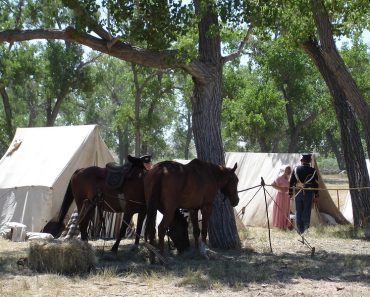Of all the interactions we have with our horses on a daily basis, perhaps grooming them is the most productive; the most sophisticated. No other activity or exercise allows us to undertake as many various operations at once, and none of them is more essential than that!
Cleanliness is Important
Who wants a filthy horse? Not many people would want one. We can clean sores and lacerations by grooming our horses. Grooming horses allows us to eliminate parasites or evaluate medical issues and give appropriate deworming medications. Parasites or diseases could be prevented by cleaning our animals. Cleanliness is crucial in this case. It’s as simple as that.
And in reality, what you’ve found is this:
Grooming horses is an opportunity to check on our horse’s health and general condition at any time. Our hands follow along with our horses’ muscles, their structure, and their alignment while we groom them. Swelling or bumps, cuts or abrasions may be felt physically by us as we follow these areas with our fingertips.
We will be able to feel when our horses are disturbed, or we touch a sore or sensitive area. We may detect lumps or bugs that are harming our horse, and we may become more proactive in dealing with these infections. When it comes to grooming our horses and physically interacting with and communicating with them, each of these vital components is put under the microscope.
Improving the Skin and Coat’s Overall Condition
Grooming our horses also improves the appearance and health of the coats. Brushing removes dead hair and tissues, resulting in a beautiful sheen and a clean healthy appearance. Grooming equines not only promotes circulation but also their health, allowing their bodies to work more efficiently while pumping more blood throughout the body and strengthening the tissues and coat.
Why is it Necessary Before Riding?
It’s critical for riders to groom their horses before ever handling their gear. This prevents dirt and debris from accumulating between the horse’s body and his equipment, as well as provides a final check before equestrians mount up.
There are numerous key areas to pay attention to when grooming horses, particularly just before a ride. Naturally, the back is vital since it will hold your saddle. Before ever putting your saddle on your horse’s back, make sure all filth and debris have been removed. An overlooked rock or twig can be both uncomfortable and dangerous for your horse during the trip. Not to mention the risk of causing a wound that might lead to infection if not properly cared for.
Before riding, it’s critical to clean and inspect your horse’s girth. This is where your girth will be fastened, so you’ll want it cleaned and checked ahead of time. The same goes for the saddle—you want your horse tranquillized and free from any unnecessary tension or discomfort. It’s a very brief procedure that may be completed while grooming horses; nevertheless, it is extremely vital.
How Do You Look After Your Horse’s Feet?
The feet, perhaps more than any other part of the horse, are important. There is no comparison to seeing a lame horse endure. That’s why it’s so crucial to look after his feet, especially while grooming your horses! Make sure that trimmings occur on a regular basis, check for hooves on a daily basis to make sure they’re in good shape, and schedule regular veterinary visits to keep his feet happy and healthy. Your horse will repay you with many years of happiness and companionship if you take care of his feet properly!
Companionship with Connectedness
Horses, like people, benefit from physical contact. In the wild, these social animals engage in constant touch with a variety of members of the herd, so being without any contact is quite strange. Harry Harlow’s canonical research on the function that physical touch and closeness play in mammal lifestyles underlines how crucial love and affection are to our existence. Grooming horses is an activity that allows you to show your love and care while also accomplishing a number of important objectives at the same time.
What Will You Need?
The following list contains some of the more essential equipment for maintaining your horse’s tack and grooming. This list is by no means exhaustive, but it does offer a summary of the most common tools in the trade:
- Hard brush
To begin grooming horses, use a soft brush to remove the first layer of mud and dust and grime.
- Medium brush
To retrieve any loose shavings produced by a firm brushing
- A finishing brush, or a soft brush
For a polished and glossy finish.
- Curry Comb
A rubber curry comb is preferable, but it’s also more difficult to keep clean and doesn’t look as nice.
- Comb/Brush for Mane & Tail
- Hoof pick
Cleaning out a horse’s hooves
- Sweat scraper
After a bath, your horse will need to be dried with a sweat scraper.
While grooming your horses, there are a few more factors to consider: Vacuum, hoof polish, coat conditioner, mane and tail conditioner, rag or cloth, and any other tools or materials that you and your horse enjoy!

